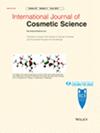Overcoming challenges in the development of cosmetic formulations with agro-industrial by-products: The case of cork powder
Abstract
Objective
Consumer's growing environmental awareness influences purchasing behaviour, prompting the cosmetics industry to adopt sustainable practices based on a circular economy, using agro-industrial by-products as cosmetic ingredients. This study assessed the feasibility of using cork powder, an abundant by-product of the cork industry, as a cosmetic ingredient. Key challenges were identified, and effective solutions were proposed for integrating cork powder into cosmetic products.
Methods
To obtain a suitable ingredient, cork powder was subjected to physical treatment. The resulting heat-treated powder was further characterized for particle size, colour, moisture content, hygroscopicity, pH, oil absorption capacity and heavy metal content. The stability of cork powder, both as a stand-alone ingredient and incorporated into a makeup formulation, was evaluated over 90 days, and its safety was assessed in human keratinocytes and a 3D EpiSkin™ model.
Results
Cork powder exhibited a brownish colour, low moisture content (3.03 ± 0.42%) and hygroscopic properties (9.04 ± 0.08%), along with high oil absorption capacity (206.93 ± 2.33 g/100 g) and acceptable heavy metals levels, considering the intended use as cosmetic (As = 0.350 ± 0.020 ppm; Cd = 0.086 ± 0.003 ppm; Hg = 0.005 ± 0.001 ppm; Pb = 1.420 ± 0.030 ppm), which remained stable for at least 90 days. The safety of the powder for skin application was also ensured up to at least 5% content. Using 2% cork powder in O/W formulations provided a colour shade suitable for makeup foundations and remained stable over the 90-day study period.
Conclusion
Key challenges in transforming cork by-products into cosmetic ingredients include the standardization of the preparation process, batch uniformity and suitable microbiological burden. Sieving, washing, filtration and heat treatment of cork powder reduced microbial burden and improved batch uniformity. Industrial processing did not introduce contaminants, with heavy metal levels remaining below regulatory limits for cosmetic use. The treatment and storage conditions adopted preserved the physicochemical properties, and pre-formulation and stability studies validated its potential as a sustainable innovative ingredient for decorative and mattifying cosmetics. Transforming by-products into cosmetic ingredients is a stepwise process that must be carefully carried out to ensure optimal performance.


 求助内容:
求助内容: 应助结果提醒方式:
应助结果提醒方式:


